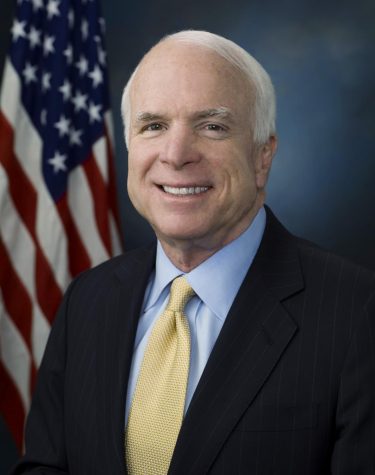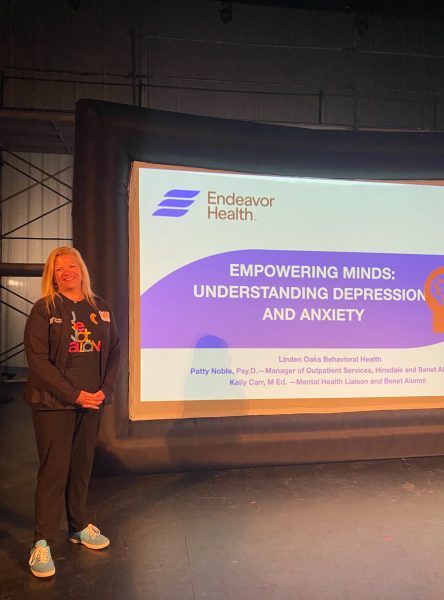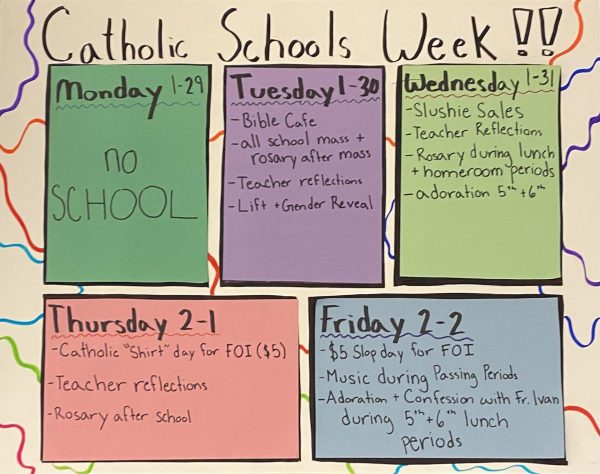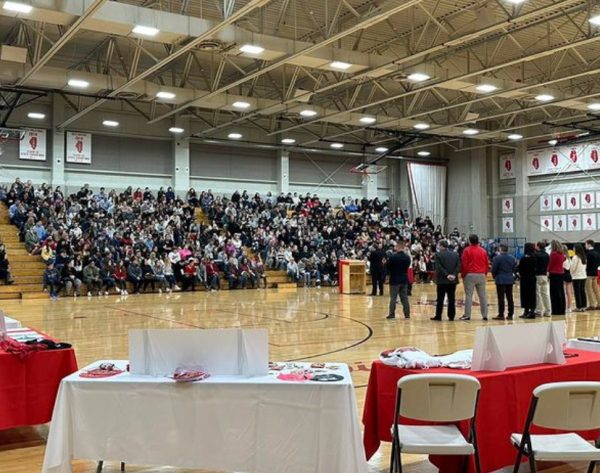In Memory of John McCain; A Soldier for his Nation

“Nothing in life is more liberating
than to fight for a cause larger than yourself,
something that encompasses you
but is not defined by your existence alone.”
~Senator John McCain~
It was said when General Douglas MacArthur made his dramatic departure from the United States military, “Old soldiers never die, they just fade away.” There is no better case of this truth than the passing of Senator John McCain. He was a soldier and public servant for his country, a man who fought on the front lines of both a real and devastating war in Vietnam and a figurative and divisive war in Washington D.C.. He worked tirelessly throughout his life to defend and uplift the United States of America, struggling for compromise and cooperation at a time in politics when there only seems to be polarization and disunity. He was a maverick who learned to be fearless, to do what he saw as right, and because of that, when brain cancer claimed his life on August 25, 2018, four days before his eighty-second birthday, he did not die. How can a man so respected and beloved die? John McCain on that day merely exited from the stage upon which we are all playing and feuding in this, at times confusing, at times frightening, but always beautiful thing called life. His will be a slow fade from the public eye, as we all reflect on his actions on behalf of his country and the effect of his life on all of ours.
John McCain was born John Sidney McCain III on August 29, 1936, in Coco Solo, a region of the then-U.S.-controlled Panama Canal Zone. His father, John McCain II, was a naval officer whose family lived at the military base defending the canal. John III and his siblings, Sandy and Joe, moved a great deal during their childhood due to their father’s position in the navy, with the future senator attending twenty different primary schools before his family finally settled in Northern Virginia in 1951. McCain graduated from high school in 1954 and went on to attend the United States Naval Academy in Annapolis, Maryland, following in the footsteps of his father and grandfather, who both attended the academy and went on to become admirals. McCain finished his schooling in 1958, earning low marks in several of his classes despite a high IQ, a result of his difficulty in applying himself to subjects he did not feel passionate about.
McCain then was shipped out to Pensacola Air Base for two and a half years to become a naval aviator. He finished flight school in 1960 and was assigned to A-1 Skyraider squadrons on both the USS Intrepid and the USS Enterprise, piloting ground-attack aircraft. After honing his abilities on these non-combat vessels, McCain requested reassignment to the front lines of the Vietnam War. He was transferred to the USS Forrestal, stationed in the Gulf of Tonkin, and became part of Operation Rolling Thunder, a stratagem designed to rain enough firepower on the Vietcong to force them into submission. However, on July 29, 1967, a terrible fire erupted at the center of his carrier and caused a large explosion as the bombs stored in the hold were ignited. McCain managed to escape from his burning jet, but he was struck in his legs and chest by shrapnel from the blast. That day, 134 sailors died, and it took 24 hours to control the blaze. After recovery from his injuries, McCain returned to active duty with a post on the USS Oriskany, where he continued to be a part of Operation Rolling Thunder and would go on to earn the Navy Commendation Medal and Bronze Star for missions flown over North Vietnam.
On October 26, 1967, during his twenty-third bombing run, McCain’s jet was shot down over Hanoi by the Vietcong. He broke both arms and a leg when he ejected from the cockpit and nearly drowned upon crashing into Trúc Bạch Lake. North Vietnamese soldiers pulled McCain ashore, then proceeding to crush his shoulder with a rifle butt and impale him with bayonets. They shipped McCain to Hanoi’s main detainment center, Hỏa Lò Prison, commonly referred to as the “Hanoi Hilton” due to the amount of time captured Americans stayed there. The prison’s name is directly translated as “Hell’s hole,” and there John McCain certainly went through hell. Upon his arrival, his captors refused to treat his wounds and regularly beat and interrogated McCain for information, only sending him to a hospital after discovering his father’s position as an admiral. For six weeks McCain was marginally treated, as he lost fifty pounds and his hair turned snow white. He was then transferred to another prison camp on the outskirts of Hanoi in December 1967, where his two cell mates did not expect him to live another week. In March 1968, McCain was placed in solitary confinement, where he would remain for the next two years of his life.
Back in the United States, McCain’s capture made the front page of newspapers around the country, and in mid-1968, his father was named commander of all U.S. forces in the Vietnam theater. Upon realizing they had such a high-profile prisoner, the North Vietnamese offered the younger McCain early release, a tactic that would not only generate positive propaganda for a Vietcong who would now appear sympathetic. This would also break the morale of every soldier held in confinement, as they would feel betrayed by the fact that the elites fighting would be released before them. McCain, realizing this, refused to accept his freedom unless every other soldier who had been captured before him was also released. As retaliation, his captors began an intense program of severe torture on him in August 1968. While suffering from dysentery, McCain was bound and beaten every two hours on a regular schedule, bringing him to the point where he nearly committed suicide. Eventually, McCain was forced to sign anti-U.S. propaganda “confessions” about the state of the war in Vietnam, a decision he would say later in his life that he would always regret. However, he refused to sign any more of these statements, which resulting in a continued schedule of beatings two to three times a week for months. McCain was a prisoner of war for five and a half years, finally being released on March 14, 1973, as the conflict in Vietnam began to draw to a close.
When McCain returned to the United States, he underwent a year of physical therapy and rehabilitation for his injuries at Fort McNair in Washington D.C.. In 1974, he returned to active service as commanding officer of a training squadron stationed in Florida, improving the unit’s flight readiness and safety records and earning them their first ever Meritorious Unit Commendation. After this, McCain began to serve as the Navy’s liaison to the U.S. Senate in 1977, marking his first entry into the world of politics and the starting point of a long and fruitful career in public service. He retired from the Navy on April 1, 1981, with the rank of captain, moving to Arizona to begin civilian life. McCain received numerous military decorations and awards for his service, including the Silver Star, two Legion of Merits, the Distinguished Flying Cross, three Bronze Stars, two Purple Hearts, two Navy and Marine Corps Commendation Medals, and the Prisoner of War Medal.
After settling his family in Arizona and working as vice president of public relations for Hensley & Co., a large Anheuser-Busch distributorship in Phoenix, McCain decided to run for the House of Representatives in 1982. The thirty-year incumbent of the first congressional district, Republican John Jacobs, had retired and vacated his seat, leaving the field open to challengers. After a difficult primary race, McCain won the Republican party’s nomination, easily being elected Representative by his heavily red district. During his first term, McCain was assigned to be part of the House Committee on Interior Affairs, and upon winning his reelection in 1984, was placed on the House Foreign Affairs Committee.
In January 1987, McCain became a U.S. Senator for the state of Arizona, having defeated Democrat Richard Kimball in the 1986 election. He became part of the Armed Services Committee with whom he had communicated as a Navy liaison in 1977, the Commerce Committee, and the Indian Affairs Committee during his first two terms in the Senate. In 1988, McCain spoke at the Republican National Convention and gained national recognition, with some speculating that he could become the running mate and vice presidential candidate for Republican nominee George H.W. Bush. While McCain never did run with the elder Bush or become vice president, his career in politics was anything but uneventful during this time. He had begun to attack extremely large political contributions by any individual or corporation as a corrupting influence on government, and, in 1994, McCain worked with Democratic Senator Russ Feingold on a bill that would institute campaign finance reform. Although the bill did not pass, this would mark the first of many times McCain would reach across the aisle to work with and compromise with Democrats, which would soon become one of his defining attributes in Congress. Around this time, McCain also began to grow more confident and independent in his political views, being dubbed a “maverick Republican” by both the media and himself due to his unwavering dedication to what he believed was the proper course to take.
In 2000, McCain went up against Texas Governor George W. Bush for the Republican nomination for the presidency. Bush was the frontrunner in the campaign, but McCain’s iron will helped shape this primary into an especially contentious and bitter conflict. In the end, Bush was able to outspend and outmaneuver McCain, securing the nomination for himself and going on to become President. McCain, though, would try again for the presidency in 2008, this time becoming the Republican candidate after once again being the political underdog and fighting hard for his place. He ran against Democrat Barack Obama, who benefitted from the backlash generated by Republican vice presidential nominee Sarah Palin and financial support four times greater than that of McCain. Obama won the election with fifty-three percent of the popular vote to McCain’s forty-six, marking the last attempt made by the Senator of winning any position other than in Congress. Ten years later, Senator McCain was still serving as his state’s representative, even when he received the news that he had terminal brain cancer. His family announced he would no longer seek treatment on August 24, and that next day, at 4:28 in his home in Corneille, Arizona, John McCain died while surrounded by his family, passing from this world into the next. His body lay in state at the Arizona State Capitol in Phoenix on August 29, followed by a small ceremony at a Phoenix church the next day. On August 31, McCain’s body traveled to Washington D.C. and lay in state at the U.S. Capitol, with another funeral service following this event on September 1. McCain had asked both former Presidents George W. Bush and Barack Obama to deliver eulogies, and a host of other prominent political leaders attended this memorial. On September 2, McCain was laid to rest in the United States Naval Academy Cemetery, next to his Academy classmate and lifelong friend Charles R. Larson.
What is the legacy of John McCain? A POW who fought bravely for his country in a bloody war, enduring unspeakable pain for what he believed in? A Congressman who was able to transcend party lines and was difficult to put in a political category due to his dedication to his own beliefs? A presidential hopeful thwarted twice, but never once losing his faith in government as a result of this? John McCain was all of this and more; soldier, servant, father, and friend, a man who, throughout his life, always tried to be part of a cause that was greater than himself. The one common thread, though, in all these different lives of the former Senator, is that for him the most important and exhilarating cause of all was serving his country, in whatever form that took. For that, we salute you sir.








